
Browse our fun-packed, helpful plant-based articles, and delve deeper into this healthy, sustainable lifestyle!


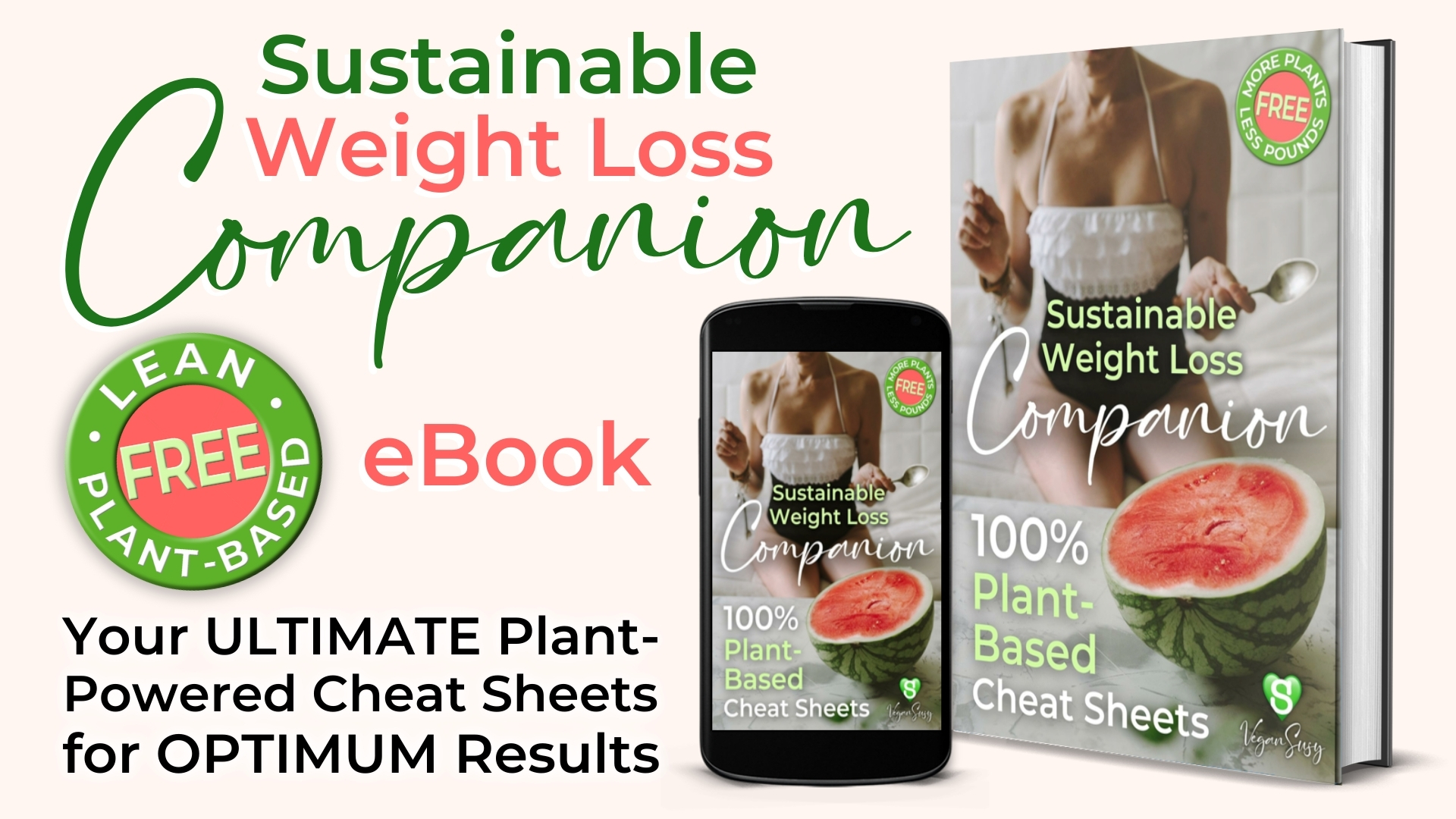
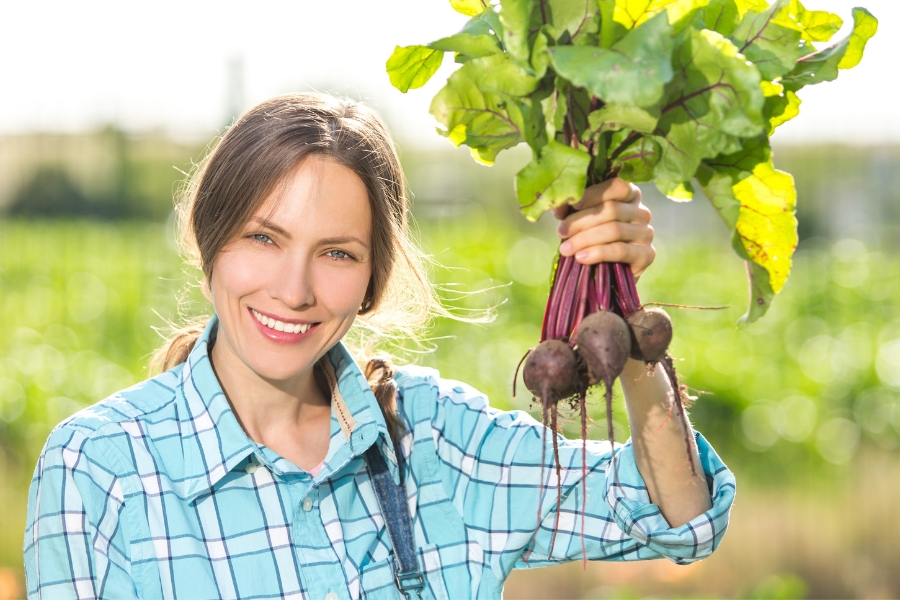
12 Easy Steps to Start Your Own Vegetable Garden: The Ultimate Guide
Plant-Based Lifestyle Tips For Women
Author: Plant-Based Susy
Applications for allotments have risen by 81% since 2011, and in the UK, growing your own vegetables has become a hot new trend. Starting your own vegetable garden is exciting, and few things are as rewarding as harvesting and cooking your own homegrown produce.
Even celebrities, including King Charles, Elizabeth Hurley, Amanda Holden, and David Beckham, are hooked!
Successful vegetable gardens require nutrient-rich soil, water, sunlight, proper drainage, and sufficient space for plants. Beginner-friendly crops include radishes, tomatoes, and salad leaves. When starting your own vegetable garden, it is best to begin in a small area and build up over time.
In addition to serving up guaranteed freshness, growing your own vegetables is a great way to spend time outdoors connecting with nature. If you have been thinking of starting a vegetable garden but don't know where to start, we've got you covered. Let's dig in and let the growing begin!
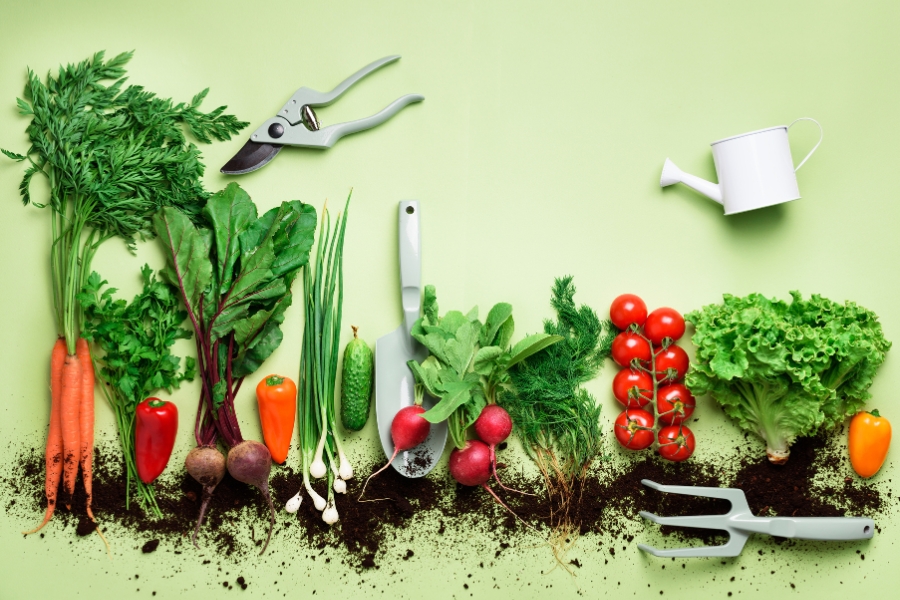
Table of Contents:
Starting Your Own Vegetable Garden
In many ways, creating your own vegetable garden is a lot like following a cooking recipe. To be successful, you need to gather all the necessary components and follow the directions.
When it is done correctly, in addition to bragging rights, you will get to enjoy your own fresh homegrown veggies.
Here's what your vegetable garden will need to thrive:
Sunlight
Enough space per plant
Nutrient-rich soil
Regular watering
Good drainage
Seeds or seedlings
Patience and love
Growing your own high-protein microgreens indoors can be a good place to start, but once the gardening bug bites, it's time to move on to the next level.
Although it can be daunting for beginners, taking the plunge and starting is the best way to grow in gardening confidence. Don’t worry; growing salad leaves is much easier than tending high-maintenance plants like orchids!
Once you get started, you will quickly find that growing your own vegetables is about much more than producing your own food. Numerous studies have shown that gardening really does make you feel happier!
Before you rush off and buy vegetable seedlings to plant in your new garden, it is vital to get the basics right. Spending a bit of time planning the best location and size of the vegetable garden will make the season’s gardening experience far more enjoyable and successful.
Let’s take a look at each one of these in more depth.
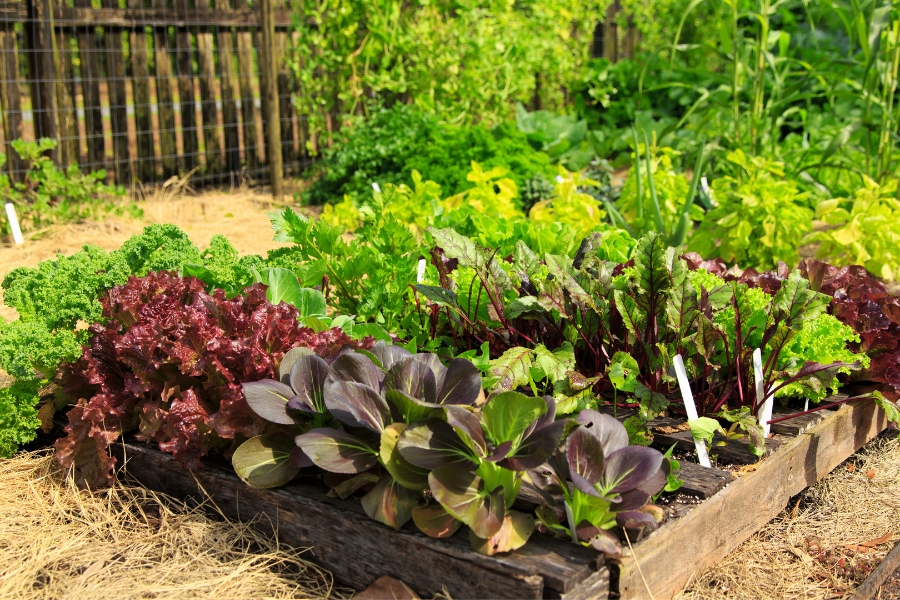
1. Select the Best Location for Your Vegetable Garden
Much like when purchasing real estate, the location of your proposed vegetable garden is vital to the success of the project.
Run through the following quick location checklist when deciding on the ideal spot:
Does the space get at least six hours of sunlight each day? This is the minimum amount of sun required by most vegetables.
Is there a water source nearby?
If you want to plant directly in the ground, will the soil drain sufficiently in the spot you have chosen?
Will your garden be sheltered from strong wind that could damage your plants?
Don't be discouraged if the space you have is not perfect. If you know and understand what plants need to thrive, there are ways of working around minor challenges.
There are many creative ways to grow your own vegetables, even if conditions are not ideal to begin with.
You may need to create raised beds in a sunnier area or use large, well-draining containers that you can move around. Vegetable gardens in more shaded spots can still produce leafy salad greens.
2. Decide on the Best Size for Your Vegetable Garden
One of the biggest mistakes novice gardeners often make is starting too big. Rather than having a huge, unmanageable space that requires loads of weeding, opt for a small, neat garden that produces vegetables that you love eating.
It is a good idea to start with a space no larger than a one-car garage.
Some beginner gardeners start with spaces that are door-frame size. Bigger is not always better; a smaller space means you can work intensively at providing excellent quality soil in a more compact area, which will result in healthier produce.
Consider the following factors when planning the size of your vegetable garden:
Is it a manageable size? Less is most definitely more when starting, so don't be discouraged if you only have a single raised garden bed or large container garden to begin with.
Is the space big enough for the vegetables you want to grow? Creepers like squash require a lot more space than vertical-growing plants like tomatoes.
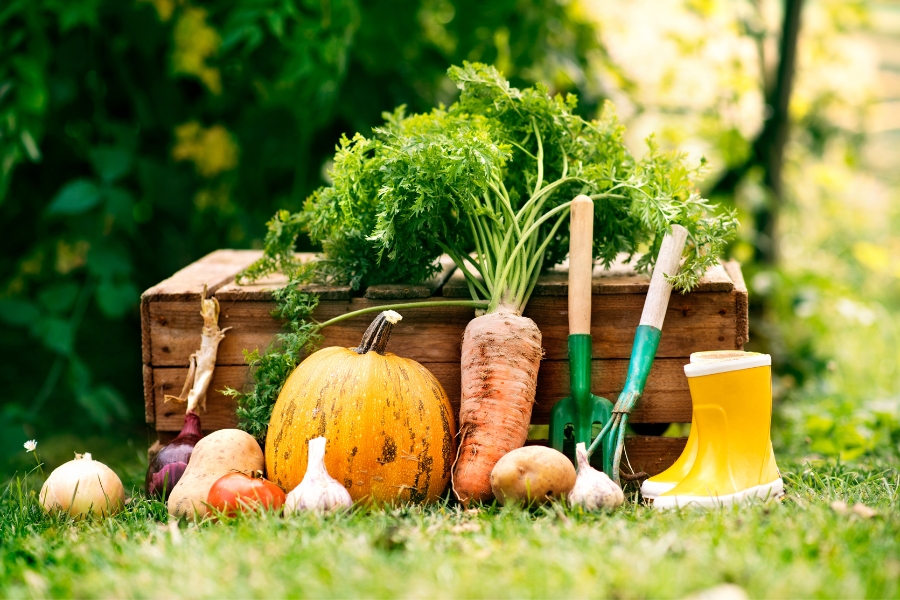
Growing Vegetables for Beginners
One of the many things that we love about having our own vegetable garden is how this activity brings people together.
There are many myths surrounding a vegan lifestyle, and we are sometimes viewed as a separate, alternative group. However, growing vegetables is an activity that has caught on among people in all walks of life.
An excellent resource for beginners who have just started growing their own vegetables is to join gardening groups on social media.
Veg Gardening UK has 185,000 members on Facebook. It is an excellent resource where we can all learn, share, celebrate, and sometimes laugh with each other as we all attempt to grow our own supply of healthy, organic vegetables.
One of the first and most essential steps for first-time gardeners is choosing which vegetables to grow.
While you may love the idea of homegrown artichokes or asparagus, some vegetables are more challenging to grow than others. It is definitely advisable to start with a few beginner-friendly vegetables first.
Choosing your first crops should be a careful balancing act between:
What you actually enjoy eating — it is no use producing a bumper crop of something that you and your family don't like or barely use.
The season you are starting your garden — there are warm-weather and cool-weather crops, and it is important to plant according to the season.
We recommend planting a few rows of some easy, fast-growing vegetables that you like to begin with.
A few rows of radishes are a fun first crop for excited beginners because they grow quickly from seed, and within a few days, you will be able to see shoots above the ground.
Unlocking Gardening Jargon for Beginners
One of the most confusing things for new veggie growers is often the amount of garden-related jargon.
When we first dive into the world of gardening, most of us don't know a perennial from an annual or fertilizer from compost!
Fortunately, Vegan Susy has been growing vegetables for quite a few years, so here's a quick jumpstart into twelve common terms you may come across. These are not difficult, and before you know it, you will be able to converse with experienced gardeners like a pro!
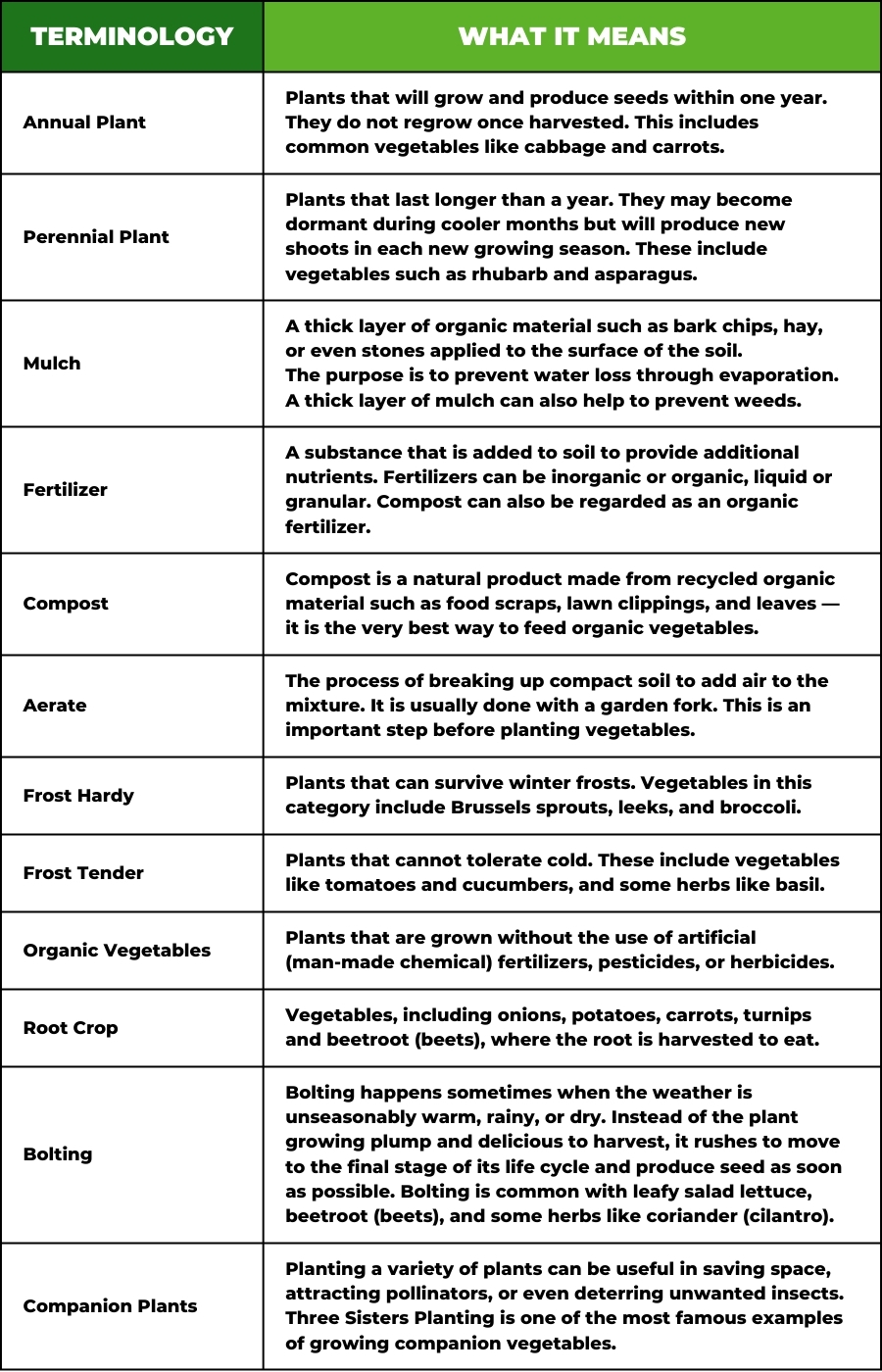
The Three Sisters are among the most famous and fascinating examples of growing companion vegetables.
Of course, there are many more jargon terms in gardening and horticulture, but these are the terms you are most likely to hear when growing vegetables.
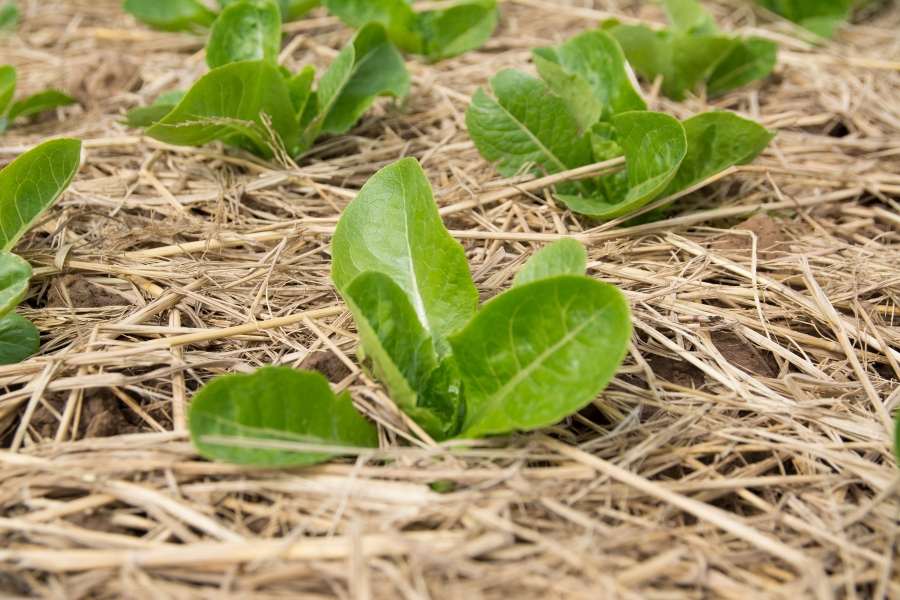
What Are the 10 Best Vegetables for Beginners to Grow?
Now that you know some frequently used gardening terms, it's time to move on to the fun part of starting your own vegetable garden.
Set yourself up for success when you are new to gardening by choosing easy-to-grow options that will give you the confidence to move on to more challenging crops.
The following is a list of some of the easiest vegetables to grow. While it is possible to have beginner's luck with some of the more difficult ones, if you do want to try some, it is a good idea to intersperse them with some easier veggies to start with.
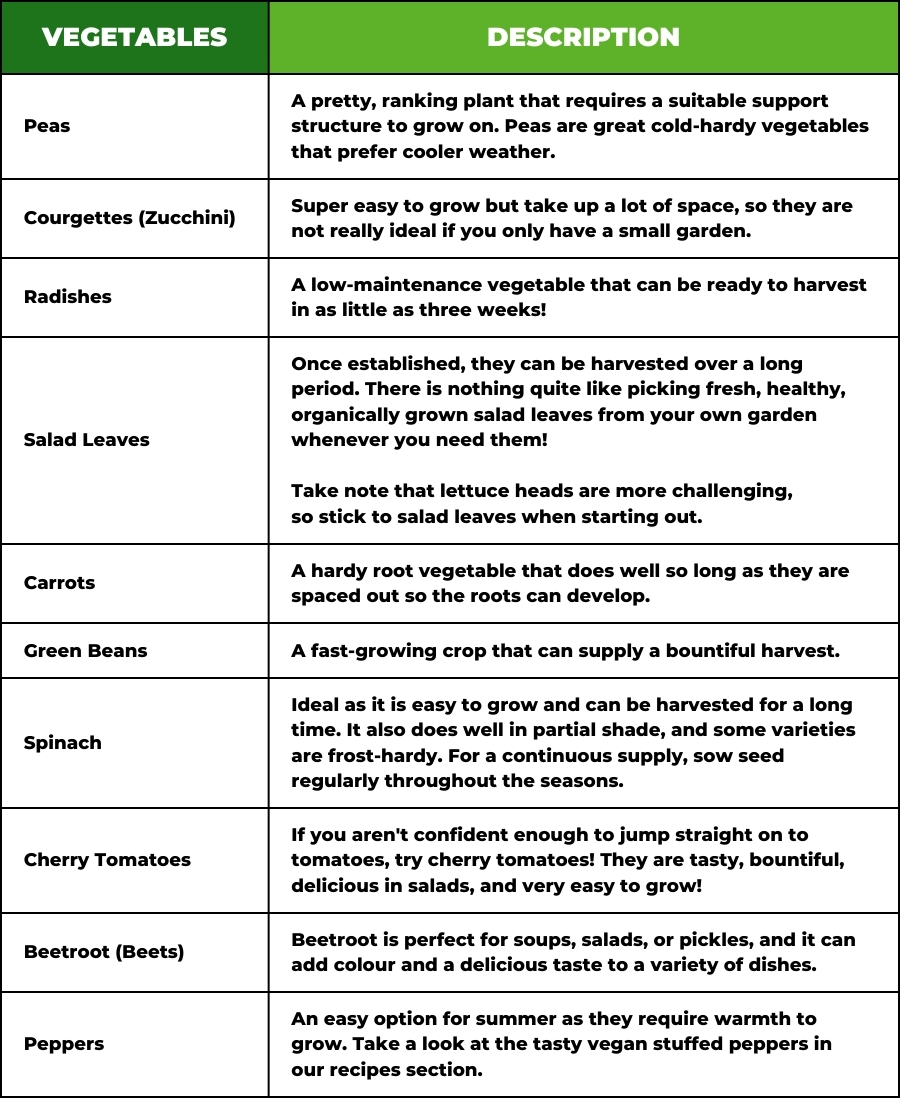
Bell peppers are an easy option for summer as they require warmth to grow. Take a look at the tasty vegan stuffed peppers in our recipes section.
12 Steps to Starting Your Own Vegetable Garden
Once you have decided on the best location and size of your vegetable garden, it's time for the fun to begin!
Gardening is a hands-on project that can be shared by people of all ages, so it can also become a fun family activity.
Let's go through 12 steps to start your gardening adventure. With some patience and TLC, you may soon be able to stock up smart with fresh vegetables from your own backyard!
Step 1: Find The Right Spot for Your Vegetable Garden
Selecting the best spot for your vegetable garden is one of the most important decisions that will affect the success of your project.
In addition to finding a place that gets at least 6 hours of sunlight per day, also consider the following:
Is it easy to access? Try to position your vegetable garden so that it is close to your house. That way, it will be convenient to quickly harvest a bunch of spinach or collect salad leaves when you need them.
Ensure that it is sheltered from driving winds.
Take note of your local conditions and choose a spot accordingly. Some gardens have a lot of resident herbivores, like rabbits, which can make keeping a vegetable garden very frustrating. Even neighbouring cats can be a challenge as they love to dig in freshly turned soil.
Make sure that there is a water point nearby.
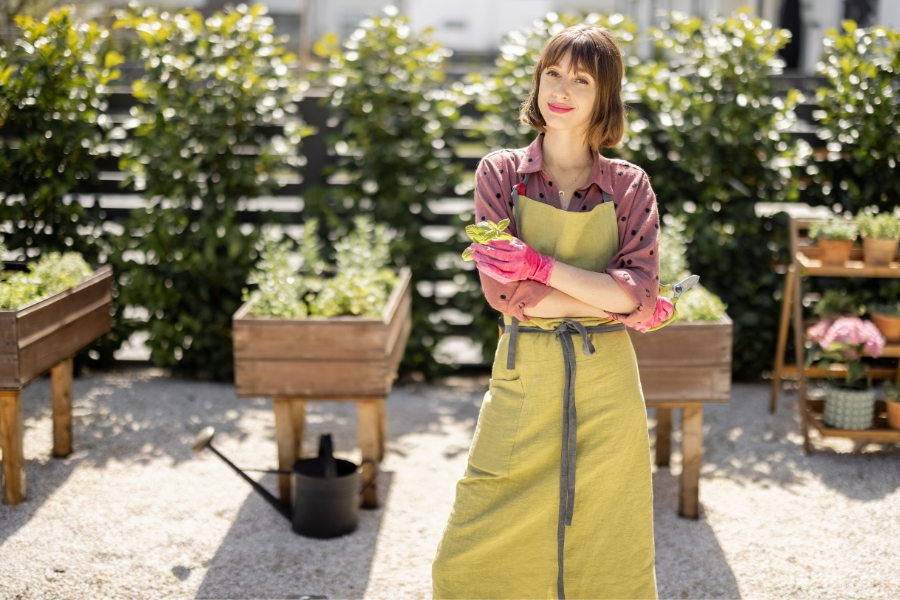
Step 2: Decide Between Raised or Flat Garden Beds
Your vegetable garden doesn't always have to be flush with the ground!
While that is traditionally how most large-scale veggies are grown, when starting a small kitchen garden, there are a lot more choices available.
Raised vegetable garden beds are becoming increasingly popular for a variety of reasons, including:
Because there is less bending, it makes gardening more comfortable.
Drainage is more likely to be better, especially in areas with heavy clay soil.
Your vegetable garden may be less of a target for wildlife, including rabbits and moles.
The downside of raised beds is that the initial outlay is significantly more than planting at ground level. In addition, they tend to dry out faster in hot weather, so this may not be the best option for everyone.
Step 3: Clear and Weed the New Vegetable Garden
Begin the process of getting your vegetable garden ready for planting by removing any existing weeds or stones from the area.
Use a spade or garden fork to penetrate deep into the soil to loosen and aerate the ground.
Grass can be particularly pesky to remove from an area where you would like to start a vegetable garden. No matter how deep you dig, tiny bits of roots are likely to remain and continuously send up vigorous new shoots.
One of the most effective, eco-friendly ways to eliminate grass from a vegetable garden is to use the no-dig method. This simply involves laying a thick layer of cardboard covered with compost. The cardboard suppresses the growth of any grass or weeds below as it slowly decomposes.
Step 4: Prepare the Soil for Planting
Not all soil is the same, and some are more suitable for growing vegetables than others.
While it is advisable to test your soil using a testing kit, when you are just starting out, the most important thing to check is that the soil you have available for the garden is loose and drains well.
There are three main types of soil that may be present in your garden:
Clay — feels heavy and quickly becomes hard and compact.
Sandy — it may be too light and not contain enough nutrients to support veggies.
Loam — an ideal mixture made up of a balance of clay, silt, and sand.
Adding a generous amount of organic material, like mature manure or well-rotted compost, to any soil is usually sufficient to provide vegetables with the nutrients they need to grow.
It is easy to make your own homemade compost from kitchen scraps!
Step 5: Decide What to Plant in Your Vegetable Garden
The decision about what to plant in your vegetable garden should depend on the following three factors:
What you like to eat
The season you are planting
The amount of sun your garden receives
When growing your own vegetables for the first time, it is recommended to start with beginner-friendly crops. It is also a good idea to mix and match several types of vegetables and stagger planting times so your backyard supply of freshness lasts for as long as possible.

Step 6: Choose Between Seeds or Seedlings
One of the real tests of patience for any gardener is choosing between seeds and seedlings.
For beginner gardeners, it can be more rewarding to start with vegetable seedlings or plug plants in the first season.
Planting a small plant makes it easier to:
Space the vegetables correctly.
Enjoy your vegetable garden from the first day.
Look after the plants as they are more mature.
Vegetable seedlings are available from most plant outlets, but they are likely to be more expensive than seeds. A combination of seeds and seedlings can be a fun way to start.
Keep in mind that some vegetables, like carrots and parsnips, can only be planted from seed as they develop long tap roots that cannot be disturbed during the growing process. These root vegetables must be planted from seed in the spot where they are to be grown.
Step 7: Sowing and Planting the Vegetables
Water your garden bed before planting seeds or vegetable plugs to ensure that the soil is damp below just the top layer. Most vegetable seeds can be sown directly into the soil during the warmer months.
When planting seedlings, dig a hole large enough to completely cover the plant's roots with loose, moist soil. Gently remove each seedling from the tray and cover the roots.
Whether you are planting seeds or seedlings, the next step after planting is to water your vegetable garden thoroughly. Seeds must remain moist to germinate, so set up a regular watering routine to give your tiny vegetable seeds a head start.
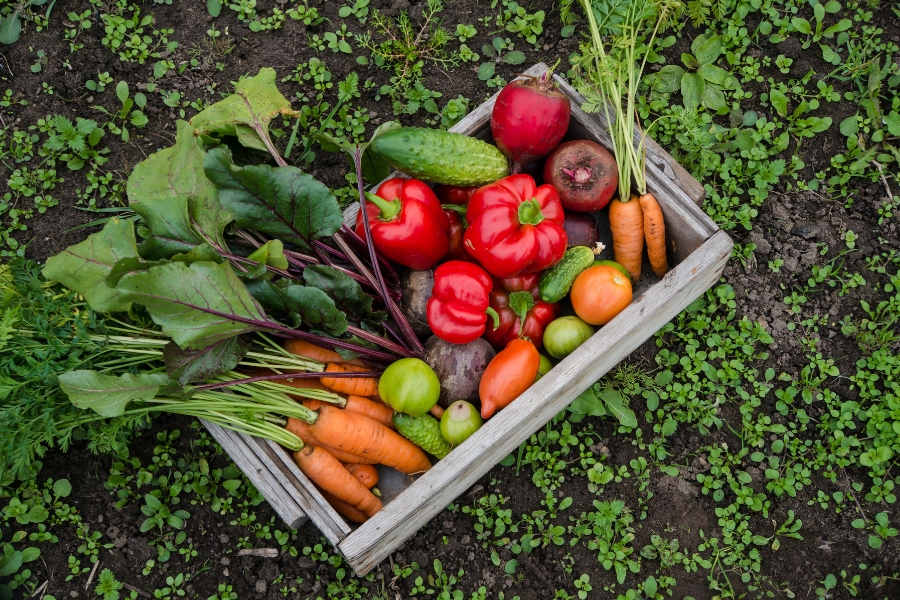
Step 8: Water and Weed Regularly
One of the things that no one tells you when you start your own vegetable garden is that we all instantly become meteorologists!
Most vegetables need a lot of water, and they also may need to be watered more during dry periods.
Tuning into our environment and being aware of how our healthy food is grown is a rewarding spinoff of growing your own vegetables. Weed between the vegetables regularly to keep your vegetables healthy and the garden looking welcoming.
A great way to save water and, at the same time, cut back on the number of weeds that are likely to pop up is to add a layer of mulch to the top layer. This should only be done after your vegetable seedlings have surfaced.
Materials that can be used as mulch in a vegetable garden include:
Dry leaves
Compost
Damp newspaper
Shredded bark
Straw or seedless hay
Grass clippings. Only use clippings from lawns that have not been treated with pesticides or weed killers.
Step 9: Be Prepared for the Arrival of Garden Pests
The sight of garden pests like slugs, snails, and aphids feasting on your highly anticipated vegetables can test the tolerance of even the most dedicated eco-warrior.
Being prepared in advance and creating a toolkit of natural pest control methods can make a big difference in the success of your vegetable garden.
The method you choose to keep your vegetable garden pest-free will depend on what you have planted and your local conditions.
There are many ways to discourage pests without chemicals. Being prepared before challenges arise will put you in a better position to tackle and eliminate the problem before it destroys your hard work.
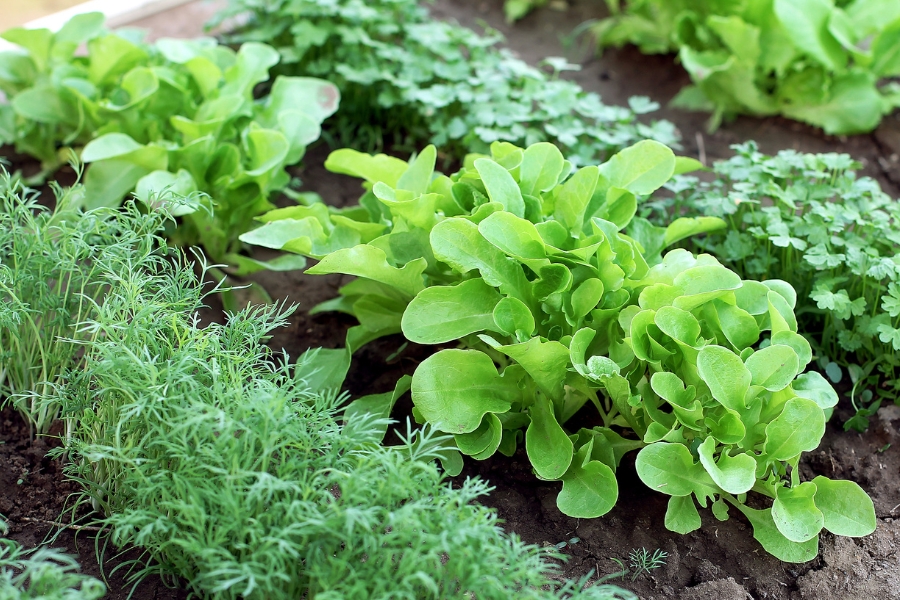
Step 10: Try Companion Planting to Maximize Yield
Companion planting allows you to fit more into your vegetable garden, as you can fit an assortment of plants of varying heights into the same space. In addition, having a variety of plants helps to prevent pest infestations.
Some flowering plants can provide immense benefits to vegetable gardens without taking up much space.
Try adding marigolds to attract pollinators, while at the same time repelling some harmful pests. Nasturtiums are edible and also add a delightful pop of colour to any vegetable garden.
Step 11: Harvesting the Vegetables From Your Garden
Harvesting from your very own vegetable garden for the first time is one of the most highly anticipated moments for any vegetable grower.
It is time to take a step back, congratulate yourself, and soak in the feelings of achievement.
Some vegetables, like radishes, mature quickly and should be harvested as soon as they are ready. Leaving them too long will result in a change of texture, and they take up space that you could use to grow more vegetables!
Remove ripe vegetables regularly. Although tomatoes are technically a fruit, they are a solid addition to any summer vegetable garden and will continue to grow and produce throughout the season.
Step 12: Crop Rotation Will Improve Soil Quality
Crop rotation means moving the position of vegetables each season. In addition to adding fresh organic fertilizers, like compost or manure, to your vegetable garden each time you start a fresh crop, it helps to move things around.
The benefits of crop rotation include preventing soil diseases from building up and improving the fertility of the soil. This means bigger crops and more delicious vegetables from your garden!
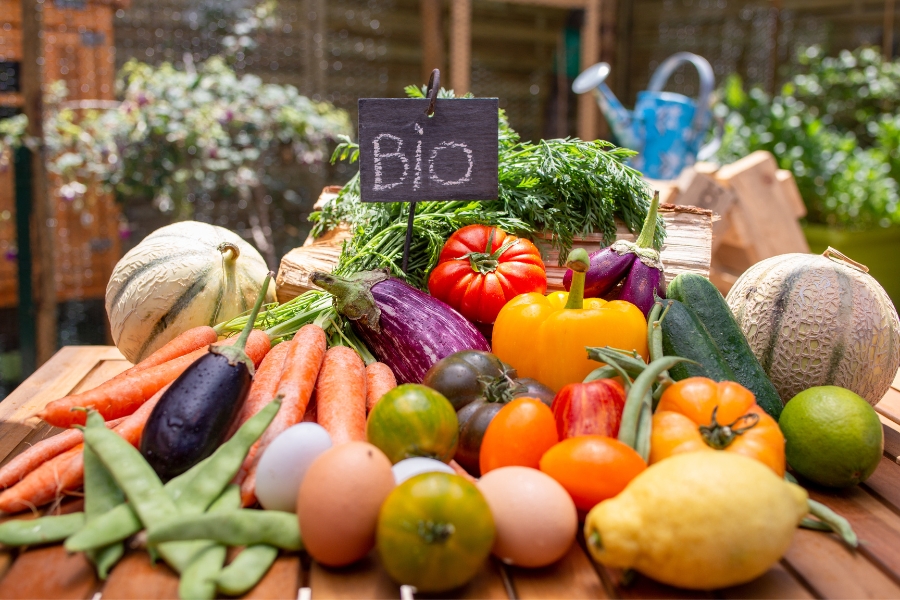
Frequently Asked Questions
I only have a tiny space outside; how can I grow my own vegetables?
You'll be pleased to know you don't need a huge garden to grow vegetables! Check out our awesome guide to growing your own veggies at home, even if you only have very limited space outside: Grow Fresh Vegan Food on Your Balcony: 7 Easy Container Garden Ideas
What is the most difficult vegetable to grow?
It is generally agreed that artichokes are challenging to grow. They are perennial plants that require very specific temperature conditions, and on top of it, they are also a favourite of aphids.
Head lettuce is another tricky vegetable for beginners. They may be common and impressive on supermarket shelves, but growing them takes quite a bit of practice.
Salad leaf lettuce is recommended for beginners.
Can I start vegetable seeds indoors?
Yes! If you can't wait and your outdoor vegetable garden isn't quite ready, starting your vegetable seeds indoors can give you a jump start on the growing season.
With suitable trays or containers, many vegetables can be started successfully indoors. Some good options include tomatoes, broccoli, onions, cabbage, kale, lettuce, and celery. You can even simulate a mini-greenhouse by covering your trays with plastic bags between watering.
Keep in mind that vegetables with tap roots cannot be started indoors. Cucumbers and squash also prefer being planted directly in the area where they will be grown.
Is growing your own food healthier?
Knowing how your food is produced is one of the most rewarding benefits of growing your own food! Starting your own vegetable garden gives you complete control of the production process, so you know the food you are eating is free of man-made chemicals, harmful pesticides, herbicides and fungicides.
How much sunlight do vegetables need?
Most vegetables need at least 6 hours of direct sunlight daily for optimal growth.
Conclusion
Growing your own vegetables can make switching to a plant-based diet even more satisfying! With some basic planning, starting your own vegetable garden is easier than you think.
Before you know it, you could be harvesting organically grown fresh produce grown in your own backyard.
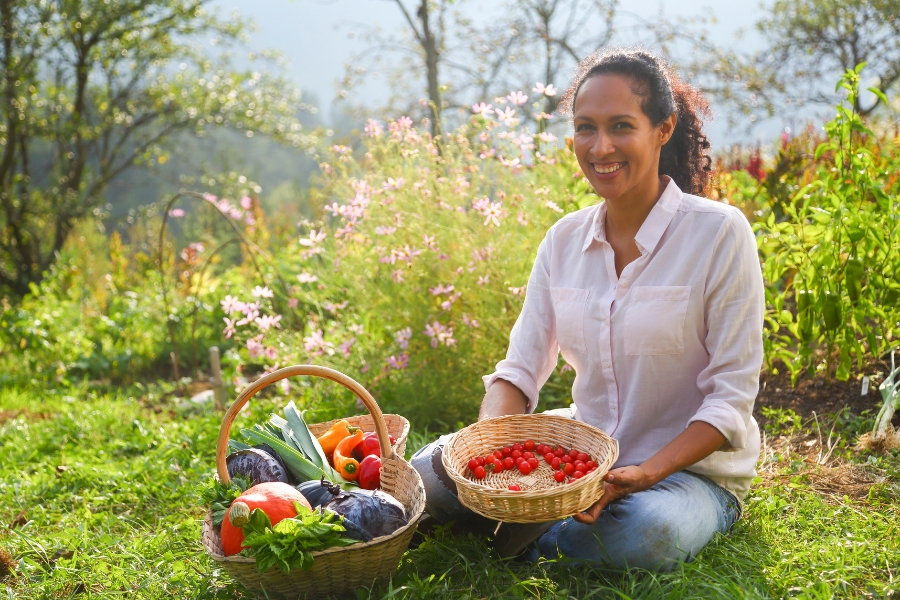
💚 "Happy Plant-Based Eating & Exercising!" 💚

Plant-Based Susy
Plant-Based Nutrition Professional & Weight Loss Coach
Empower Yourself: Embark on a Delicious Fat Loss Adventure

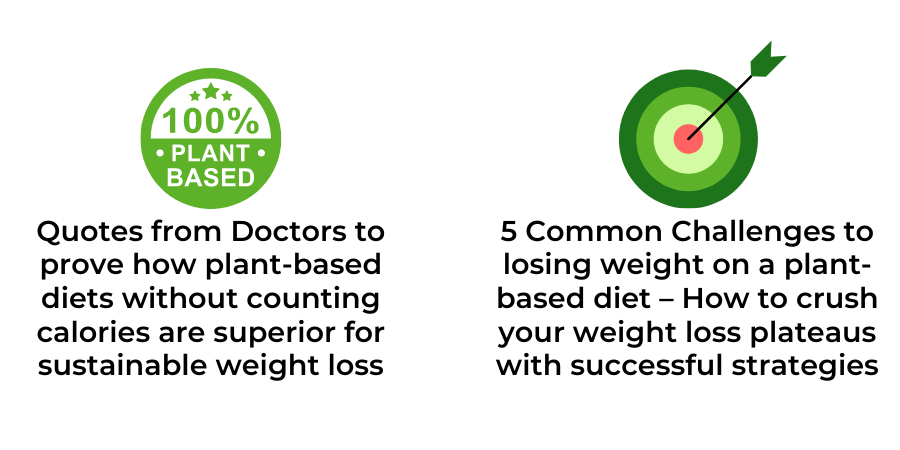
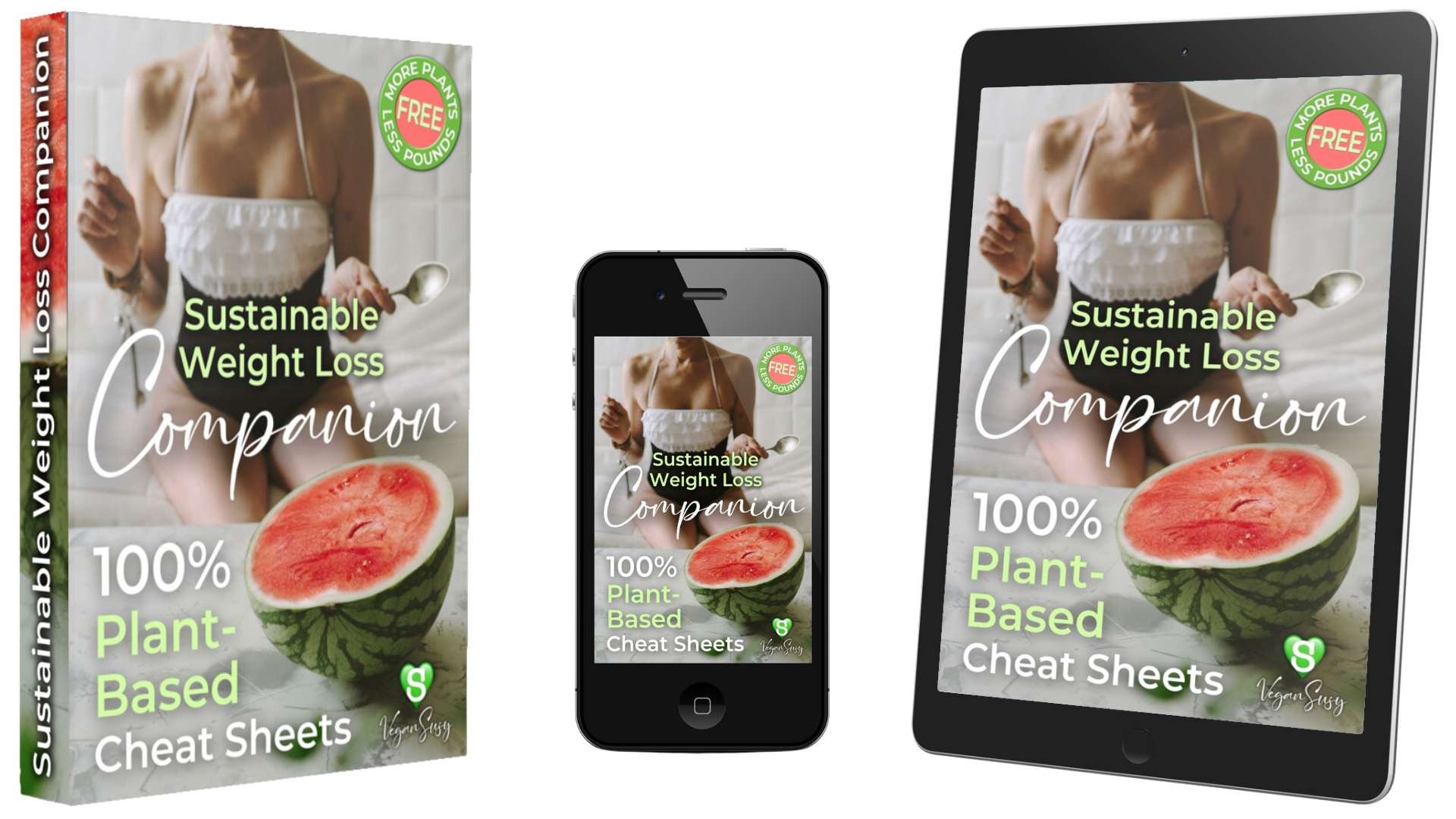
🍉 Get Ready to Jump Start Your Fitness Goals AND DISCOVER A HEALTHIER YOU!
🍉 Let's Make Your Fat Loss & Optimum Health Journey a Delicious Success Story!
🍉 Get The FREE Sustainable Weight Loss Companion eBook and CHEAT SHEETS!
More Free Resources
Unlock Your Transformation Today!
© 2025 VeganSusy Ltd. All Rights Reserved


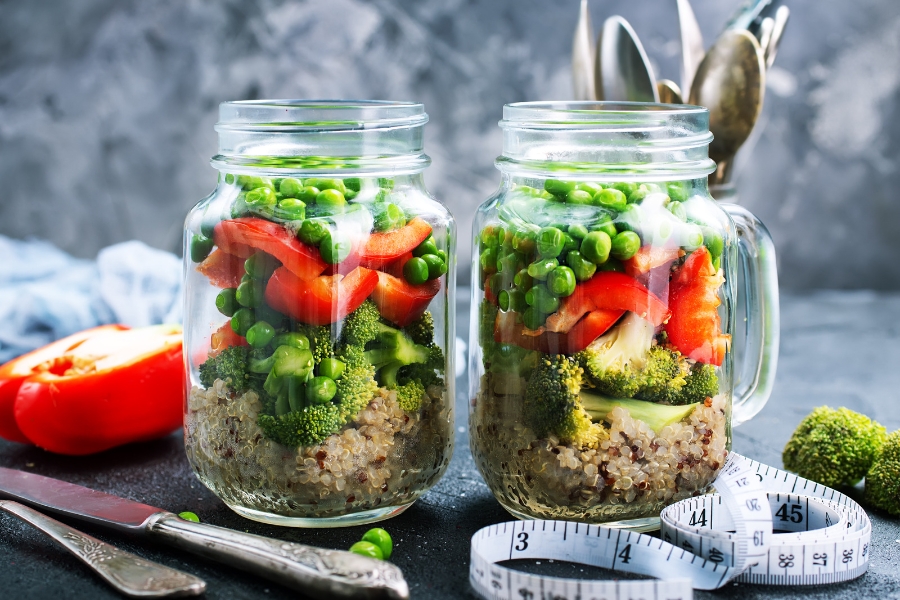
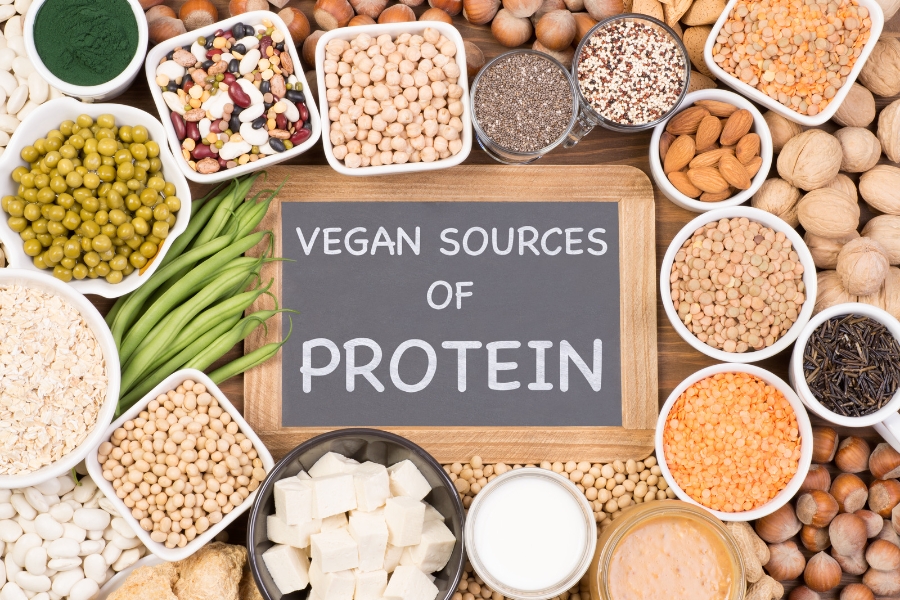

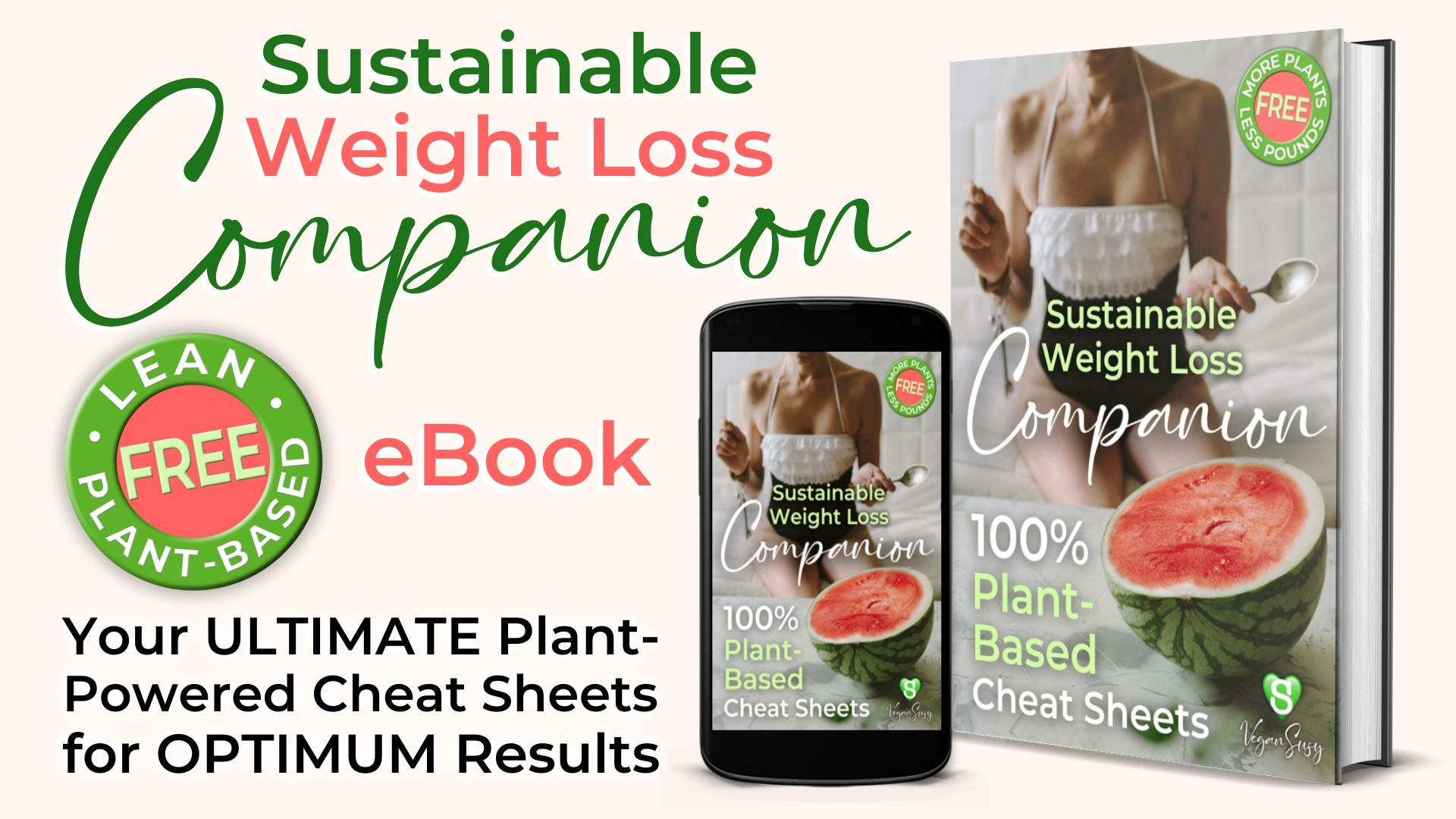





Facebook
Instagram
Youtube
Pinterest